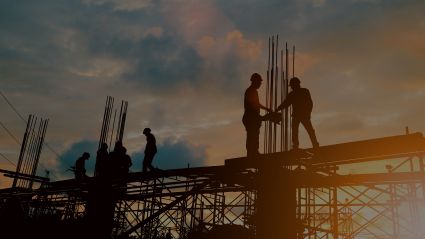Submitted electronically
|
The Honorable Chuck Schumer |
The Honorable Nancy Pelosi |
|
The Honorable Mitch McConnell |
The Honorable Kevin McCarthy |
Re: The Value of Predevelopment Investment For Strengthening and Sustaining U.S. Infrastructure
Dear Leaders:
As Congress considers a wide range of ideas to get needed investment into America’s rural, urban and under-invested communities, promote job creation and support a strong post-COVID economic recovery, catalyzing local innovation for long-term economic resilience is paramount. Local fiscal shortfalls are likely to persist for some years. Now is the time to make sure that these communities lacking the capacity to access complicated federal grant programs or engage impact investors are connected to the skills and resources they need to jumpstart critical economic development and infrastructure projects.
We are writing to urge that a small portion of federal funding be used to catalyze community resilience and best practices in order to maximize the long-term impact of future federal investment in infrastructure. To jumpstart this community-led approach, Congress should:
-
Provide predevelopment capital to close the funding gap that prevents projects moving from concept to construction
-
Create a Federal Predevelopment Fund for technical assistance grants and loans focused on critical community infrastructure and inclusive economic growth
-
Ensure access to the fund is based on commitment to long-term performance improvements
-
Utilize a nation-wide network of regional acceleration centers focused on capacity building and resilience best practices
Predevelopment Capital
For distressed communities struggling to jumpstart local economies and create investment-ready projects, the critical funding gap is catalytic predevelopment capital. This is the funding that pays for tasks that need to be completed before public project construction or private impact investment can occur, such as market assessments and economic feasibility studies, site/lease acquisition costs, architectural and engineering work, and permitting. This predevelopment gap is especially acute for smaller and underserved communities who lack the fiscal condition to acquire specialized technical assistance.
Federal Predevelopment Fund
Based upon existing research, we believe that whatever the agreed-upon amount for future COVID recovery packages for local and state relief, economic development, and critical infrastructure investment, a portion of this approved funding should be used to create a Federal Predevelopment Fund. The fund would support local technical assistance grants and loans to rapidly develop community-led projects while acting as a catalyst for investment-ready resilience partnerships. Eligible infrastructure investments would include water systems, energy, transportation, broadband, housing, food infrastructure as well as natural and nature-based infrastructure projects alone or in combination with these other investments.
Performance Improvements
Access to the fund would hinge on a commitment to evaluating economic outcomes as well as to long-term performance improvements in key economic resilience criteria, such as life-cycle asset management, budgeting, and other fiscal best practices. Based on past economic studies, each $1 spent on predevelopment will generate $16-17 in total economic outcomes and funding leverage.
Regional Acceleration Centers
Congress could further leverage its investment in local capacity by linking the Predevelopment Fund to a nation-wide network of regional acceleration centers, housed at the U.S. Economic Development Administration, designed to accelerate capacity-building on the ground, and transfer best practices and successful models among states and regions. A regional delivery strategy for federal engagement would allow communities to act quickly to deliver on the most pressing projects in their region without being slowed down by federal programmatic requirements, funding silos that don’t fit post-COVID community priorities, or local maching requirements that make it harder for smaller and underserved communities to access the technical assistance they need to innovate.
Trillions of dollars in sidelined capital could move into high-impact infrastructure projects if the federal government addresses the local capacity and innovation barriers currently impeding economic development and infrastructure. This bottom-up shift cannot happen without a series of additive capacity and performance-based investments made now. To catalyze this process, Congress should provide predevelopment investment to accelerate realization of the nation’s pipeline of investment-ready infrastructure projects.
Sincerely,
Accelerator for America
American Flood Coalition
American Society of Civil Engineers
Build America Strong Coalition
Building America’s Future
Center for Rural Innovation
Center for Sustainable Energy
Coalition for Green Capital
Council of Development Financing Agencies Economic Innovation Group
Enterprise Community Partners
Farm Conservation Alliance
International Economic Development Council Living Cities, Inc.
Local Initiatives Support Corporation (LISC)
LOCUS: Responsible Real Estate Developers and Investors
Milken Institute
Moonshot Missions
National Association of Counties
National Association of Development Organizations National Association of Manufacturers
National Institute of Building Sciences
National League of Cities
Natural Resources Defense Council
New Partnership on Infrastructure
Quantifed Ventures
Results for America
Rural Community Assistance Partnership
The Nature Conservancy
The Trust for Public Land
U.S. Chamber of Commerce
William Julius Wilson Institute at Harlem Children’s Zone












